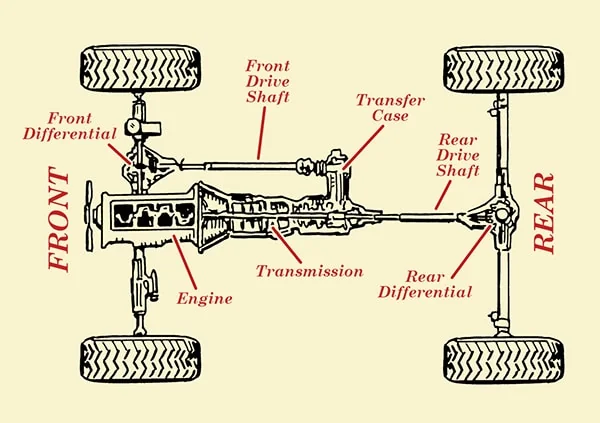Almost nothing in this article is accurate. AWD vs 4WD has nothing to do with locking front and rear differentials. It is that one has a transfer case, and the other does not. Most 4WD vehicles have open front and rear differentials.
The National Park Service doesn’t require locking differentials, so I’m not sure where this person got that idea from. They do however require that they have a transfer case, which the Cybertruck and Rivian do not. So despite the author claiming those would be 4WD, they are not. And do not qualify by the definition used by the NPS.
I think they are correct that there may be a need to update the rules since EVs have no need for a transfer case since there is no mechanical connection between the front and rear axles typically. It’s terrible to try and make that argument with all of your other information incorrect however.
Thank you for this, I was part way through and questioning my sanity.
Though now I’m thoroughly confused as to where my Audi Q7 Quattro stands in the grand scheme of things…
Apparently AWD:
Generally if there is a question of AWD vs 4WD, the only thing you need to look for as an ability to shift to 4 low. It changes the final drive ratio so all of your gearing is dramatically lower. It’s a capability that requires having a transfer case. Though I’m sure there are some weird exceptions out there of 4WD vehicles that don’t have 4 low, it’s a pretty simple rule of thumb to decide which side a vehicle falls on.
It’s possible to have an AWD vehicle that has a clutch or some other way to disengage two of the drive wheels. So you can have a selectable RWD or AWD. This is different than how a transfer case works though, and does not allow a change in final drive ratio.
What’s a transfer case and how does it help you go on bad roads?
In a conventional two wheel drive vehicle, the driveshaft goes from the transmission in the front to the differential in the rear. In a four wheel drive vehicle, a transfer case is mounted behind the transmission instead. This splits the power between two driveshafts, one going to the rear differential and one going to the front differential. This gives power to all four wheels, allowing the vehicle to traverse roads where the traction might rapidly change and differ between the wheels.

Interesting, thanks! Doesn’t an awd car also provide power to all four wheels? How does that work and what makes it worse than a transfer case in the eyes of the national park service?
deleted by creator
So there are a few things that make a transfer case and most 4WD systems generally better for off-road. The biggest two are gearing and how durable/robust the systems are.
The ability to change the final drive gives incredibly low gearing to 4WD vehicles. This provides increased torque for traversing obstacles and better low speed control.
In the durability front, that is largely due to design considerations. AWD vehicles are typically designed for on road use, so the engineers built them with that in mind. This means lighter and weaker drive shafts, weaker steering racks, less robust suspension, and generally lighter duty pieces throughout the entire system. 4WD vehicles usually designed with heavier duty used in mind (even if the majority of people won’t use them that way). This means the entire drive train is built stronger and more capable of abuse.
This is a huge generalization though. You could build a purpose built AWD off road vehicle with low gearing, and locking differentials if you wanted. And there are plenty of 4WD vehicles that wouldn’t survive even moderately difficult trails. So the NPS probably made the rule because generally 4WD is more capable for that use case, and it would be difficult to make an all exhaustive list of what vehicles or components would give you the capability to navigate the trail.
Four wheel drive is “dumb” in that it simply sends equal power to all four wheels. But if one wheel loses traction, then a quarter of your available power is wasted as that wheel just spins (this is a gross oversimplification). All wheel drive, by contrast, operates like four wheel drive but uses a fancy differential instead of a transfer case. If the system detects that one wheel loses traction, it can selectively direct power to the other wheels instead of wasting it. It can also lock the center differential so that it behaves like a transfer case if you want. I don’t know the specifics of the park service’s rules, but an all wheel drive vehicle should do just as well if not better than a four wheel drive one.



